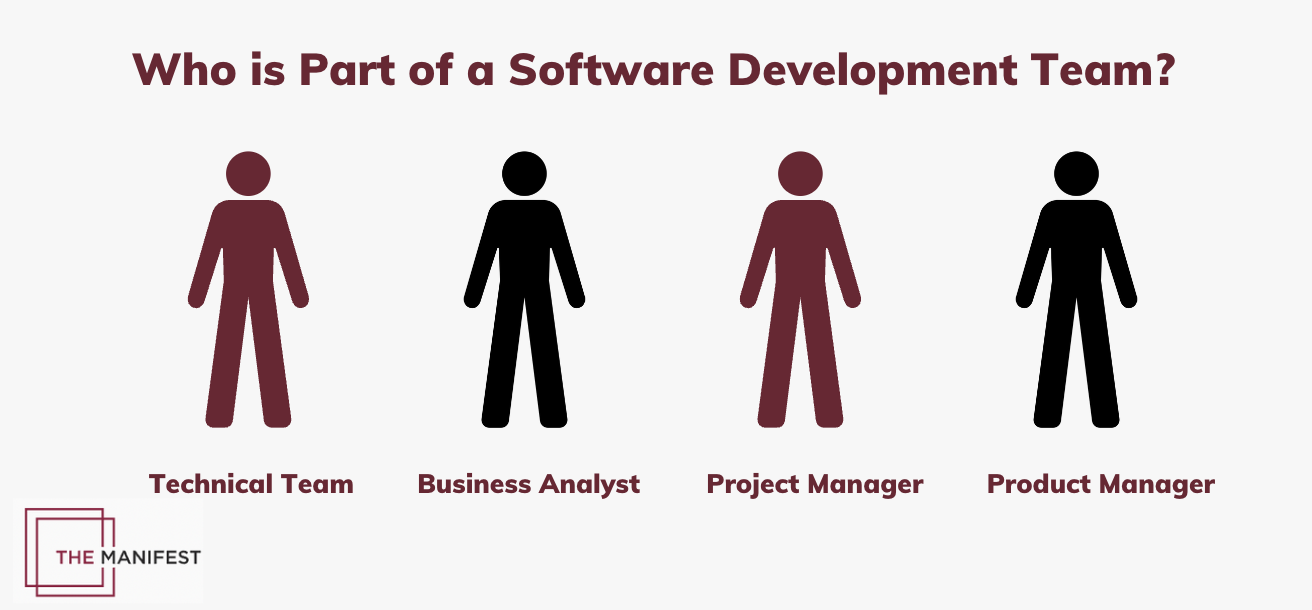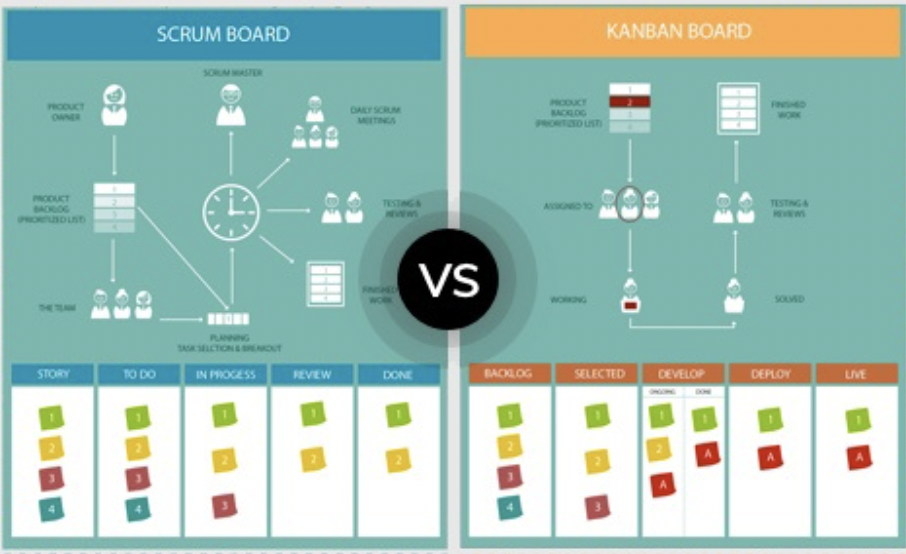How To Put Together Your Ideal Software Development Team

How To Put Together Your Ideal Software Development Team
Your software development team is hugely important to the quality and success of your product, so selecting team members is an essential part of the process. Here, we overview what expertise is needed for a well-run team and tips on how to bring them together for a software development project.
It’s no secret that software development projects require a great deal of time and monetary investment from the companies that undertake them.
In fact, fixed price software projects often cost up to $120,000.

At this cost, you and your team will certainly want to do anything possible to help your projects run as smoothly as possible.
A great way to ensure that you end up with a successful software product that meets your business needs is to assemble a good software development team.
Building a top-tier project team may seem like a difficult task. It will require you to have a strong understanding of the goals for the final product and how to bring in team members that will help you meet those goals.
However, by comprehending the different development team roles that may be necessary for your project as well as the best practices for building a software engineering team, you should be able to assemble a team that is well-equipped to handle any custom software development project.
What is a Software Development Team?
A software development team is a group of professionals that handles project management, requirement defining, designing, coding, testing, integration, and training for a small business, enterprise, lean ecommerce brand, or entrepreneur's computer or mobile app development project.
With so many functions grouped under the umbrella of the software development team, it’s important to clearly define the team structure and responsibilities early on in the development process and ensure that each team member knows what’s expected of them throughout the project.
Such a task is easier said than done, though, making true software development success a fleeting goal. BCG reported that only 30% of these sorts of digital transformation projects end up meeting the targets set forth at the projects’ onsets.
Each function within the software development team affects all the other functions. As such, taking as many steps as possible to ensure your team is well-constructed and operates with synergy is key to beating the odds and seeing success in your development endeavors.
Who is Part of the Software Development Process?
We’ve established that the professionals who make up your software development team will determine whether your software development projects are successes or failures.
To help you assemble the best team possible, let’s review the different types of professionals who may be needed on your current and future software development teams:
- Product owner
- Project manager
- Business analyst
- QA engineer
- UX designer
- UI designer
- Back-end developer
- Front-end developer
- Software architect

Product Owner
A product owner is a team member in charge of the product development life cycle for any number of software solutions. This life cycle can include conception, definition, delivery, analysis, refinement, and withdrawal.
The product owner will guide software through various iterations to maximize its positive impact on the company’s bottom line. They will oversee and recommend changes to all aspects of the product so that performs as optimally as possible from both a technical and business standpoint.
Identifying the product owner early in the software development project timeline is crucial to the project deliverable’s overall success.
Not only will it benefit your team throughout the development process, but someone familiar with the product from its early stages of existence will be best able to make informed decisions throughout the duration of its life cycle.
Project Manager
A project manager is a team member who oversees the application of knowledge, skills, workflows, tools, and techniques to ensure a given project’s success.
Unlike a product owner, the project manager only works with the product from the development project’s startup until it's completion and the product’s launch. However, during the software development process, they will serve as the team lead and encourage collaboration to maximize efficiency.
Top Qualities for Project Managers
Appointing a strong project manager for your software development project is one of the best actions you can take to build a high-quality final product. You don’t need someone who’s an expert in all functional areas covered by the team, but you definitely want someone with the following characteristics:
- Wealth of experience on different software development projects
- Ability to foster a teamwork-driven culture among the entirety of your team
- Able to provide actionable direction to all of the functional teams that make up your development team
- Able to effectively communicate with internal and external stakeholders in a manner that leaves them appraised of development progress without causing panic when challenges are encountered
Business Analyst
A business analyst is a team member who ensures that the completion of the development project occurs in line with the business goals and constraints.
The business analyst will work with the technical team to gather data about project costs and progress, analyze this data, and generate reports for the program managers to present about the cost and schedule status of the project.
If budgetary goals or deadlines look like they’re going to slip, the business analyst should communicate this risk to the program managers and engineering team as soon as possible.
That way, corrective actions can be taken proactively and any negative impacts can be limited.
Quality Assurance Engineer
A quality assurance engineer is a team member responsible for ensuring that any deliverables from the software development project are in compliance with any necessary standards.
One of the major roles QA engineers will have for your team is that of software testers. Over the project life cycle, they will plan and execute a number of tests that will help them confirm that all functionality in your final product works correctly.
QA engineers will also keep track of the functionality added throughout the development process to make sure that all client requirements are incorporated into our software solution.
UX Designer
A UX designer is a team member who optimizes the software product design to help end users have the best possible interactions with the product.
To craft a high-quality user experience, UX designers will typically focus on the following four areas:
- Value: Will our software legitimately help end users?
- Function: Will our software function as we intended it to?
- Usability: Will end users have any issues using our software?
- General Impression: Will end users enjoy using our software?
Using these considerations, a UX designer will map out the user’s journey through the software product via wireframes, which will serve as the roadmap for when the product is actually being built.
In their pursuit of an optimal user experience, UX designers will typically work with multiple other professionals on the team such as front- and back-end developers, QA engineers, and UI designers.
UI Designer
A UI designer is a team member who focuses on anticipating end-user needs and designing a user interface that meets these needs.
The term user interface refers to the space where interactions between users and software occur. In the context of software development, these interfaces are typically made up of four types of elements:
- Input Controls: Elements that allow users to input information into the software, such as checkboxes and dropdown lists
- Navigational Components: Elements that allow users to move around the software, such as sliders and icons
- Informational Components: Elements that provide users with necessary information about the software, such as pop-up windows and progress bars
- Containers: Elements that tie related content together, such as the accordions utilized by the “People Also Ask” section in Google search results
Because both professionals directly influence the overall usability of a product and rely on some of the same team members, it can be easy to confuse UI and UX designers.
UI designers will step into the development process at a later point than UX designers. They will take the user journey wireframes put together by the UX team and come up with all the UI elements that will be necessary for this user journey.
Back-End Developer
A back-end developer is a team member responsible for the coding necessary to build the server side of the software system.
The back-end of the software is where all the functionality of the software is written and stored. This functionality is then accessed indirectly via the user-facing elements designed by the front-end developers.
In addition to this functionality, the code written by back-end developers also supports the databases and APIs behind a software product.
Front-End Developer
A front-end developer is a team member who builds the visual, user-facing elements of the software system.
Front-end developers will be the ones converting the user interface elements designed by UI designers into the code that makes up the front end of the software solution. This code will also need to be linked to the code written by the back-end developers.
The delineation between front- and back-end developers is clear in practice, but it’s important to also note that their skills aren’t necessarily interchangeable.
For instance, front-end developers will typically code in HTML, JavaScript, or CSS whereas back-end developers will utilize languages such as C++, C#, or Java.
Software Architect
A software architect is a team member responsible for the high-level design and strategy for the new software product.
The software architect will get involved early in the development life cycle to set the standards for development such as coding languages and tools to be used.
From there, they will guide the overall strategy of the development project, making decisions ranging from product compatibility to product launch specifications.
The high-level mindset of the software architect makes it necessary for them to collaborate with everyone on the team, namely the product owner and project manager.
4 Tips for Putting Together the Right Team
Now that you understand what a software development team is and what types of professionals make up a software development team, you’re probably wondering how to put together the best possible team for your business.
While the specifics of the process will largely depend on the nuances of your business, here are four tips that can help you optimize your software development team-building journey:
- Define a development methodology early
- Clearly identify key skill sets
- Pre-select a software development team structure
- Communicate transparently throughout the process
Read on for an overview of how you can put each tip into practice in the context of your business.
1. Define a Development Methodology Early
One of the easiest ways to know what types of team members you need on your software development team is to pick out a development methodology as soon as possible.
In today’s software development world, one of the most commonly-employed methodologies is the agile methodology.
Rather than utilize the traditional model of waiting to deliver the entire product until a full launch, agile calls for work to be delivered in smaller groupings or sprints. By delivering these smaller groupings, feedback can be incorporated throughout the development process.
Under the agile umbrella, there are two sub-methodologies:
- Scrum isolates each sprint so that it effectively serves as a separate project.
- Kanban relies on illustrating task statuses on boards to foster a more fluid and transparent development environment.
You’ll want to choose whether to build an agile software development team or to rely on a different methodology early on so you know who you need to bring on board for you development project.

Source: daffodil
For instance, if you choose to pursue agile but pick Kanban over Scrum, you’ll have no need for a project manager with experience as a Scrum master.
2. Clearly Identify Key Skill Sets
Once you have a development methodology in place, you’ll want to clearly identify the skill sets you’ll need to bring your software product to launch.
With the client requirements in mind, determining what skills will be needed should be relatively easy if you’re in sync with the technical managers on your team. They should understand which programming languages and other competencies will be necessary to fulfill any project needs.
By clearly laying out what skills you need, you should also be able to determine what knowledge you already have in-house as well as where outsourcing or bringing in new hires will be necessary to close knowledge gaps.
3. Pre-Select a Software Development Team Structure
With skill sets and development methodology clearly defined, you should be able to pre-select a software development team structure and slot people into team roles that fit within that structure.
In selecting your team structure, you’ll want to consider the software development life cycle. Following the threads of each life cycle process within the context of your project will help you determine what professionals you need as team members as well as when you’ll need them.
If you find that you’ll need more people on your team than is feasible for your business, you may want to consider opportunities where skill overlap allows people to fill more than one role.
For example, rather than having separate front- and back-end developers, having a team of full-stack developers with the ability to code in both areas may make more sense.
Another question to weigh in selecting your team structure is where you prefer to have generalists versus specialists.
- Generalists: people with a wide breadth of knowledge in a number of areas
- Specialists: people with a great depth of knowledge in a particular area
You may prefer specialists for the more taxing areas of the project scope, but it’s important to not overlook the value of having a hybrid team of generalists and specialists.
After all, there are bound to be challenges that arise that call upon your team to exhibit skills you didn’t anticipate needing early on in the project. In these areas, generalists can thrive.
4. Communicate Transparently Throughout the Process
Transparent communication is the cornerstone of strong project management. It makes sense, then, that it would also be a best practice for building a top-tier team for a software development project.
When bringing in potential team members, you’ll want to clearly communicate your expectations for their skill levels, responsibilities, and other professionals they should be collaborating with regularly.
Doing so will ensure that everyone on your software development team knows what’s expected of them going into the development process.
Throughout the software development life cycle, you and your team are bound to encounter scope changes and unforeseen difficulties.
In these scenarios, you’ll want to employ the same transparent communication you did at the onset of the project to ensure your team can continue to operate as effectively as possible.
Building a Software Development Team Requires Strong Management and a Wealth of Experience
Putting together a winning team for your next software development project may seem like a daunting task.
However, as we’ve reviewed here, understanding the components of your ideal team and effectively communicating those goes a long way towards assembling the best possible group of professionals.
The team you end up with will be made up of people with a number of different roles, potentially including:
- Product owner
- Project manager
- Business analyst
- QA engineer
- UX designer
- UI designer
- back-end developer
- front-end developer
- Software architect
When determining which professionals from this group your software development team needs, be sure to define a development methodology early on, clearly identify which skill sets each role requires, pre-select a software development team structure, and communicate transparently throughout your team building and development processes.
Connect with top software development companies on The Manifest.
Additional Reading:
